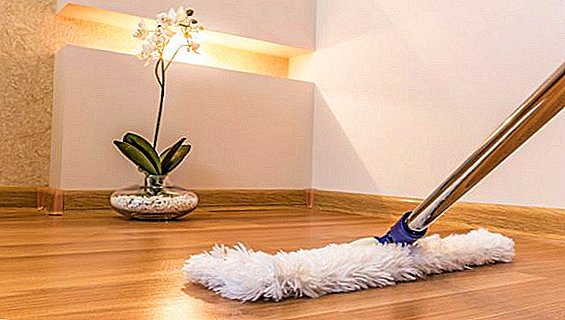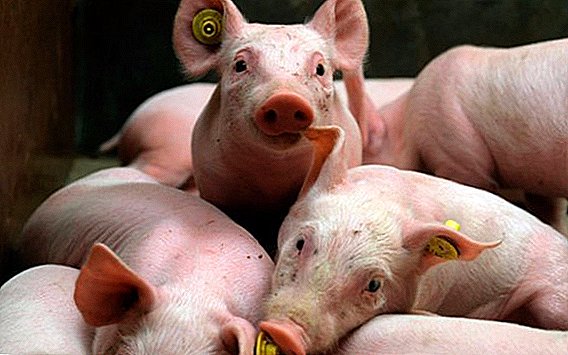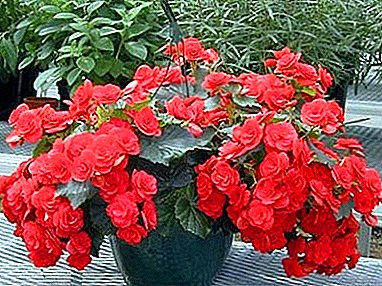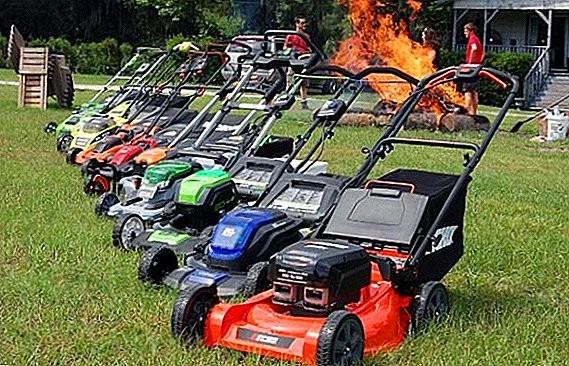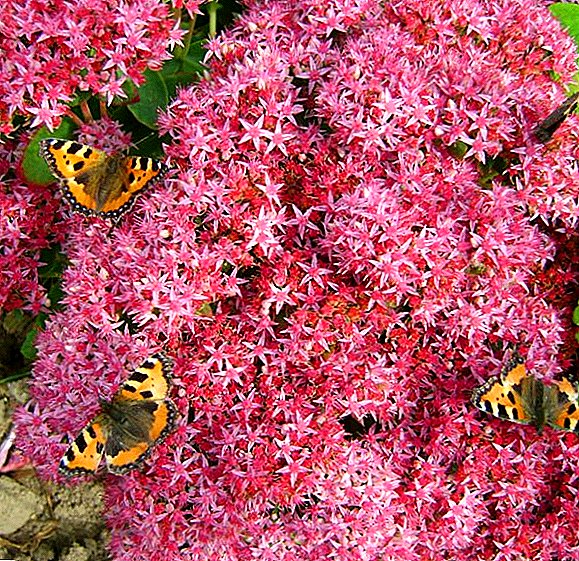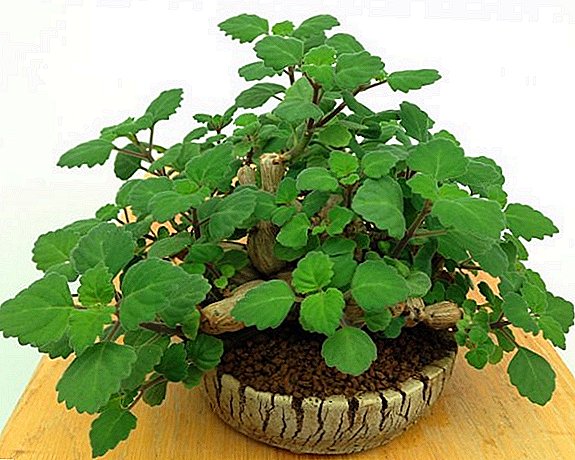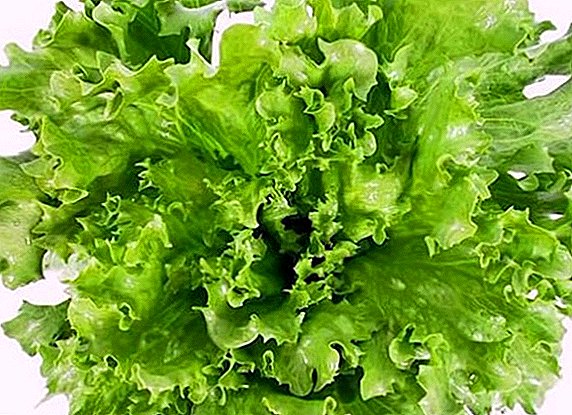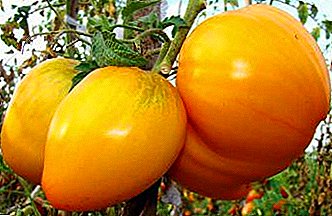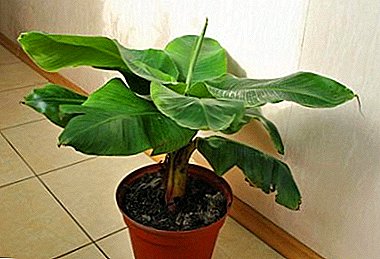
Dwarf Banana - resident of forests located in the tropical and subtropical zones. It is distinguished by the fruits of small size, compared with those that we used to see all year round in supermarkets and markets.
The dwarf banana has got on well in the middle zone of Russia and is very good at home.
general description
A dwarf banana is a pretty plant. large sized bushwith broad, wavy leaves. Due to the fact that the leaves, closely intertwining, form a dense, short stem, dwarf banana is often associated with a palm tree. But the similarity is present only in appearance, the dwarf banana is a herbaceous plant.
Under favorable conditions, it can grow. up to 1.5-3 m in height. The fruits of some species of dwarf bananas are edible, bright yellow with a pulp sweeter than the standard-size “traditional” fruits.
Kinds
Several types of decorative dwarf bananas suitable for indoor cultivation:
- Bloody. Such an ominous name this variety was only due to the color of the leaves, the shade of which can vary from bright red to crimson. The plant is quite large, can reach 5-6 meters in height. Often, this particular variety is grown not for consumption, but for interior decoration. In addition, the fruits of the bloody banana are inedible, they have many small seeds, and the pulp is almost tasteless.
- Lavender. Another variety, the fruits of which are not suitable for food. However, the moment of lavender banana flowering is a truly beautiful sight. Its flowers are large, bright purple, interspersed with orange and yellow shades. Ideal for growing in pots, as it does not grow to very large sizes and, as a result, does not require frequent transplantation.
- Scarlet. A medium-sized plant, the leaves of which are narrow, of a dark green shade, and the flowers are massive, bright red. Also perfect for growing in pots, as rarely grows more than 1 meter in height. Often used in the summer as an ornament of loggias and windows from the outside. Fruits are not consumed.
- Yellow. The flowers of this variety are compared with the Chinese lotus, to which they look very similar, hence the second name - “Golden Lotus”. One of the smallest representatives of its kind, grows, as a rule, not more than 50 cm in height. A rather rare species, which until recently had not been very popular.
- Pink velvet. Ornamental plant, not often found in apartments and houses. This variety is not too common yet, but is rather demanding on the conditions of detention. The flowers of the plant are lilac-pink, very fragrant. The fruits of this plant ripen in exactly the same color, but they are not edible.
- Manna. It has flat, large and wide dark green leaves, a cone-shaped inflorescence is formed in the center, the flowers are red and rather large. Very thermophilic and light-loving plant.





Home care
How to grow a dwarf banana at home? consider the main points.
Features care after purchase
After purchasing a variety of dwarf banana, you must give him some time to adapt to change of conditions of detention. There is no need to immediately transplant and fertilize the plant, as well as provide abundant watering.
It is better to leave a dwarf banana in the pot in which it was purchased, for about 1.5-2 weeks in a warm dry room, protecting it from bright and direct sunlight.
Lighting
In view of the fact that the dwarf banana is not a small plant, and its lowest species grow at least 50 cm in height and width, it is necessary to provide it with enough space for growth. Lighting should be enough, especially if a variety with wide and large leaves was selected.
Temperature
In winter time year, the temperature of the room in which the plant will be contained should not fall below 20-22 ° C. In principle, a dwarf banana can withstand a temperature of 15-16 ° C, but it is better not to expose it to such stress.
At low temperatures, leaf growth and the formation of inflorescences slow down. Summer however, a banana needs a higher temperature, about 26-30 ° C.
Air humidity
In the native habitat of the dwarf banana the humidity is high enough. In artificial conditions for the most favorable existence, the humidity of the air should not be lower than 60%.
Bloom
Most often, the plants begin to bear fruit for 3-5 years of life. Most varieties flowers remain for quite a while: from 2 to 8 months.
BUT after flowering The plant begins to actively bear fruit. If the plant, for some reason, does not bloom, then most likely it is necessary to change the conditions of detention or change the fertilizer.
Fertilizers (dressing)
Top dressing should be regular, but not very frequent. Usually used leaf and root dressing.
Sheet is applied to the leaves, with it you must be very careful that the plant does not get burned. Top dressing is most effective, but it should not be abused.
Some plant growers add poor fertilizer concentrate to watering, thinking that it will improve the growth and condition of the plant. However, in practice, the plant gets an excess of complementary foods, which can lead to its death.
Growing up
 You can grow a dwarf banana in two ways: with the help of seeds or with young plants from an adult plant.
You can grow a dwarf banana in two ways: with the help of seeds or with young plants from an adult plant.
From seed Growing a banana is not easy, this method requires considerable experience. Before planting in the pot, the seeds are soaked in warm water (with the addition of potassium permanganate) for a day, while slightly breaking their upper shell.
After soaking, they are sown on a moistened soil, identical in composition as for an adult plant, covered with polyethylene and left in a warm damp room until the first shoots appear, then the processes are planted in separate pots.
For breeding shoots young shoots are suitable, with the presence of at least four leaves and strong roots. They are carefully removed from the parent plant, and planted in a prepared pot. Caring for young stock is the same as for an adult plant.
Landing
If the goal is to grow a dwarf banana at home, then it is best to buy a young plant for this. It should be planted in the ground from under hardwood trees, with the addition of humus and river sand.
Pot bottom lined with pebbles or expanded clay. At first, the young plant will have to be transplanted quite often, and watering will be carried out as the soil dries.
It should not be planted in a very large pot, with a margin for future growth, since the presence of a large amount of moist soil can cause rotting of the root system.
Transfer
Replant the plant should as its roots grow. Usually, a dwarf banana is transplanted 2 times a year. Transplantation is carried out only when the roots have completely occupied the entire lower part of the pot or box.
Diseases and pests
 At home, the dwarf banana is practically not exposed to pest invasion. However, some diseases may well hit him.
At home, the dwarf banana is practically not exposed to pest invasion. However, some diseases may well hit him.
Most often this happens due to improper care of the plant. The most common symptoms the fact that the plant needs treatment:
- drying of leaves and their loss of gloss (insufficient air humidity);
- yellowing on foliage (insufficient watering);
- root decay (excessive watering).
With drafts and dry air The plant may be invaded by aphids or spider mites.
Growing dwarf banana - the process is quite fascinating.
In addition to “revitalizing” the interior with bright colors during the flowering period, this the plant can deliver not only aesthetic pleasure, but also to pamper us with its healthy and tasty fruits.


